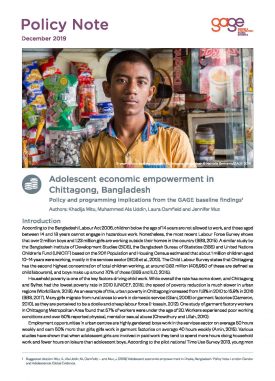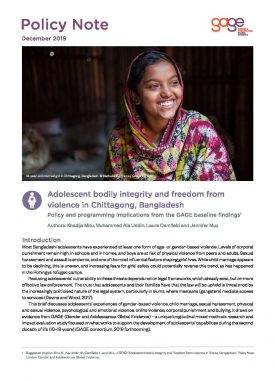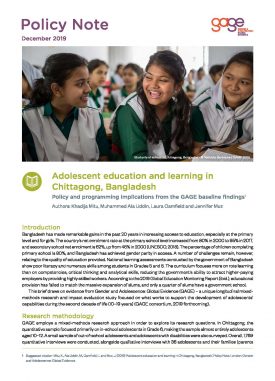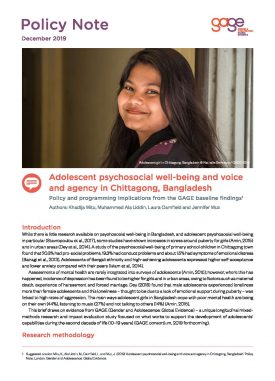Bangladesh has experienced major advances in terms of increasing immunisation rates and reducing the rates of undernutrition, infant and under-five mortality, maternal mortality and communicable diseases. It now aims to achieve universal health coverage by 2032 (World Bank, 2018). Provision of antenatal care by medically trained providers almost doubled between 1999–2000 and 2014, and deliveries in healthcare facilities rose from 8% to 37% during the same period. The government, in conjunction with other agencies, has implemented an effective Family Planning Programme associated with a decline in the total fertility rate from 6.3 births per woman in 1975 to 2.3 in 2014 (ibid.).
The latest Multiple Indicator Cluster Survey (MICS) (2012–2013) reports an adolescent fertility rate of 83 births per 1,000 adolescents, with lower rates in urban areas (76 per 1,000). Fertility is higher in Chittagong but declining. Between the 2011 Bangladesh Demographic Health Survey (BDHS) and the 2014 BDHS, the total fertility rate in Chittagong declined from 2.8 to 2.5 births per woman (NIPORT et al., 2016). Gradual improvements of basic health and nutrition services have also contributed to substantial reductions in under-five mortality – from 94 deaths per 1,000 live births in 1999–2000 to 46 per 1,000 in 2014 (ibid.). Despite this progress, maternal and neonatal mortality is still relatively high (WHO et al., 2016).
The maternal mortality ratio for those aged 10–14 is the highest of all age groups (Rahman et al., 2012). This brief draws on evidence from GAGE (Gender and Adolescence: Global Evidence) – a unique longitudinal mixedmethods research and impact evaluation study focused on what works to support the development of adolescents’ capabilities during the second decade of life (10–19 years).
Suggested citation
Mitu, K., Ala Uddin, M., Camfield, L. and Muz, J. (2019) ‘Adolescent health, nutrition, and sexual and reproductive health in Chittagong, Bangladesh.’ Policy Note. London: Gender and Adolescence: Global Evidence. (https://www.gage.odi.org/publication/adolescent-health-nutrition-and-sexual-and-reproductive-health-in-chittagong-bangladesh/)



